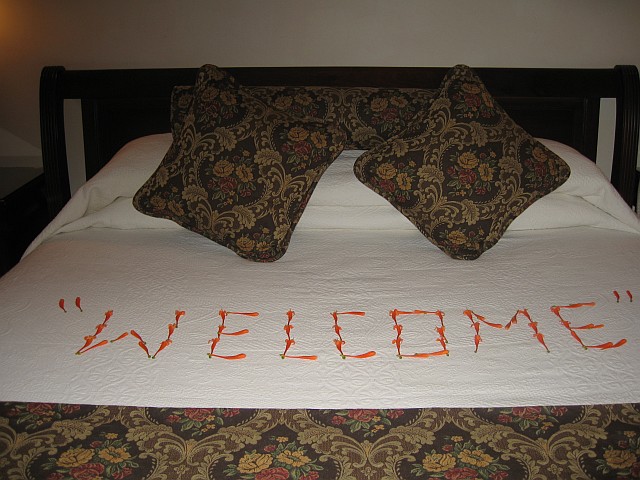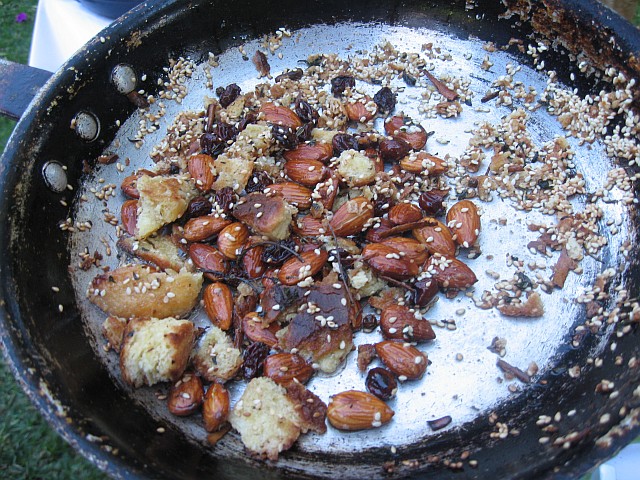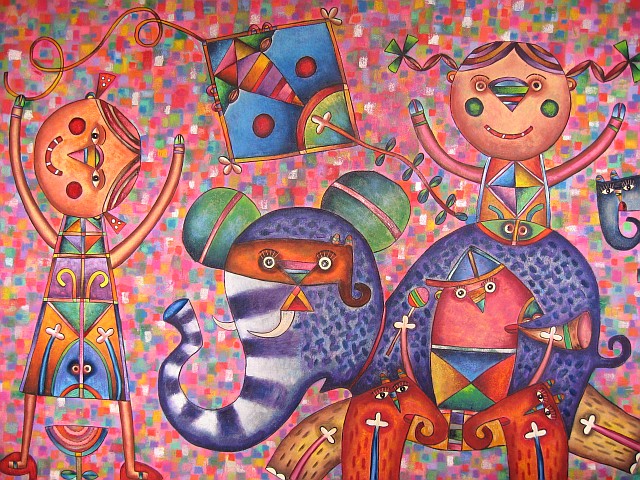
WHY OAXACA?
IT IS THE HEART AND SOUL OF MEXICO
OAXACA, a colonial treasure in the south of Mexico, is proud to be considered one of the most beautiful cities in the world. It was declared a UNESCO World Heritage Site in 1987, and its pre and post Colombian heritage, history and culture date back more than 3,000 years. It is the capital of the state of Oaxaca, and a city committed to preserving its artistic, architectural, archeological and gastronomic traditions
Just walking through the Benito Juarez Market, is a spiritual and cultural journey back in time. Foods are seasoned with indigenous spices and then cooked on open fires as they have been for generations. Tortillas, hot-from-the-oven, and tamales made with corn husks or banana leaves are stuffed with, or wrapped around, meats, shredded chicken, chilies, onions, eggs and a mix of salsas and moles.


Mounds of pungent chilies and mole powders are for sale by the kilo. Mole is a paste made with a variety of 25 ingredients that can include: four kinds of chilies, almonds, cinnamon, banana, bread, crumpled tortilla and grapefruit rind. I learn there are seven different kinds of mole: black, green, yellow, almond and Rosado that are turned into hundreds of different recipes. Everyone has a secret recipe that has been passed down from their grandmothers and great grandmothers.



Huge slices of red juicy watermelon and pineapple, and a wide variety of other locally grown fruits and vegetables are piled high . . . slabs of beef and pork hang from hooks, along with whole chickens and ducks. I cautiously dig into a mound of fried grasshoppers, and to my surprise, they are crunchy and quite tasty. I watch a man make chocolate from cocoa powder; he adds unique flavors, like chili and cinnamon to the mix. It is a many step process, but the people of Oaxaca love their chocolate.





The market is vibrant with colorful foods and colorful people, a tapestry of friendly faces, flavors, and aromas. The smell of meats being grilled whets my appetite. Diego orders an Oaxaca sampler platter of: beef, pork and chorizos with black and red mole. Unfamiliar flavors explode in my mouth; some are so hot, they take my breath away; others sweet and garlicky. I swig an icy local beer and chat in Spanish with people I will never see again. It is a memorable day, one that ignites my passion for Oaxacan food and nurtures my appreciation of places and people who touch my heart.


Hacienda Los Laureles Hotel is owned and managed by Peter and Ligia Kaiser, a charming couple who take great pride in the 1800’s hacienda they restored and expanded into a serene treasure. Peter Kaiser, a true visionary, updated and redesigned the property, adding a new building with 23 deluxe rooms and two master suites, a small spa, dipping pool and a Mexican sweat lodge … personally supervising and planting the gardens and mature mango and cypress trees. They even offer the healing powers of Shaman Ignacio Hernandez who has been conducting temascal ceremonies and helping guests for ten years.
Peter and Ligia are most gracious in welcoming me, as is their friendly staff. I am happy to return to this tranquil retreat (just 10 minutes from the center of town) after hectic days touring small villages, visiting artist studios and galleries, wandering through town, and bargaining with street merchants for hand embroidered blouses.



Learning to Make Two Different Moles
Chef Horacio Reyes sets up a table and a cooking station out in the garden of the hacienda. We make two different kinds of mole, one traditional, and the other Mexican. It takes a lot of prepping, seasoning, mixing, cooking and grilling, but we sip white wine and chop away.




Tourism in Mexico has been badly affected; the hotels in Oaxaca need help in attracting a new breed of tourist. According to Peter, who is on the development committee with the newly appointed governor,” We need to attract more tourists who are interested in history, ecotourism, and cultural tradition. The government has to spend more money to promote our rich assets.” Eco tourism is Peter’s passion and the future of Oaxaca. He encourages me to drive up into the mountains, but time does not allow such an adventure.
manager@hotelhaciendaloslaurelis.com
A Day of Touring
Diego, our dedicated and knowledgeable tour guide and owner of the Turistica Ayuso Travel agency, www.viajesoaxaca.com has a full day planned. We follow the Pan American Highway, route #90, to Teotitlan, a town inhabited by 8,000 painters and weavers. Pantaleon Ruiz, one of the most well known is waiting to share his world of art. On the way, we pass: a mescal processing factory, bundled banana and corn husks drying in the sun, and several small pyramids. There are 4-5,000 archeological sites in the state of Oaxaca. Small pyramids were originally uncovered in 1956, and ceramic chards continue to be found in the fields that line the road. Every town we visit has something else to offer, On Sundays, twenty villages come together in San Antonio to trade what they grow or the livestock they raise.

Casa de las Bugambilias, a lovely and comfortable B & B was the private home of owner Mariana Arroyo. I spend a night in one of their comfortable, spacious and very clean rooms, and then in the morning enjoy a wonderful home made breakfast.
For more info: www.lasbugambilias.com

Camino Real Hotel, once a Convent was built with spacious courtyards. Today, as one of Mexico’s most popular hotel brands, it offers large rooms and many modern amenities that blend into its Colonial history and architecture. Inez Diaz recently moved from Acapulco to Oaxaca, with her daughter, to take over as manager .When my plane is canceled due to the snow storm; Inez graciously arranges a two night stay at a special rate. I enjoy their delicious Oaxacan breakfast buffet, a refreshing swim in the pool, and the mariachis that serenade me with my favorite Mexican songs.
Museo Textil Oaxaca is a private museum, housed in what was the first Dominican Monastery in Mexico. The museum is in Oaxaca because the region has the most varied weaving techniques in all of Mexico. The museum, opened in 2006, has four exhibition rooms; 16 artists are represented in each show and the exhibition changes every five months. Three techniques are represented in the pieces that hang on the walls: one, an original painting along with the artist’s embroidered interpretation, two, the artist working with a weaver to create an interpretation, and three, collaboration between weaver and artist. The museum’s collection is huge; more than 5,500 textile pieces are warehoused. A young man leads me on a mini tour; his knowledge and commentary is greatly appreciated as he explains the different techniques. and gives me a brief background on the artists whose work is on display.
Los Pacos Oaxaca Restaurants
Paco and Lucy Rodriquez, owners of Los Pacos Restaurants, also run a mole factory that produces six different kinds of mole. Chef Paco is the Secretary of the Oaxaca Restaurant Association (there are 150 members). He tells me: “I learned to cook from my grandmother and my mother who helps run the other restaurant”. I join them for lunch, and we become friends over some of his most popular specialties. Lucy’s passion is restoring furniture. I love the food at Los Pacos, and local folk artist Fernando Andriacci’s animated paintings that hang on the walls.

My last night on town, Lucy, and her daughter Pamela, drive me to the outskirts of the city to meet artist Fernando Andriacci. His huge loft size studio is as colorful as his paintings. Several easels hold in- progress canvases; pots of paint and brushes cover an array of tables, and limited edition prints are neatly stacked. Fernando would like to sell his work in the United States, but he has been burned a couple of times in trying. He shares his passion for painting, and I, my appreciation of his art.





It is late when we leave; we drop Pamela at a friend’s party. Lucy asks if I am as hungry as she is, and off we go to her best friend’s pequeno restaurante, where I devour just about the best food in the world.
I am sad to leave Oaxaca; but the blizzard back in New York, did give me three extra days and nights during which time, I shared the heart beats of second, third and fourth generation Oaxacans who love where they live, cherish what they do, and embraced my presence. Besitos to Manuel, Lucy and Paco, Peter and Ligia, Pantaleon, Ignacio, Horacio, Inez, Diego and all the people from Chiapas I met in the markets.
Diego drives me to the airport. We hug; he too has touched my heart.
www.viajesoaxaca.com or attayuso@hotmail.com